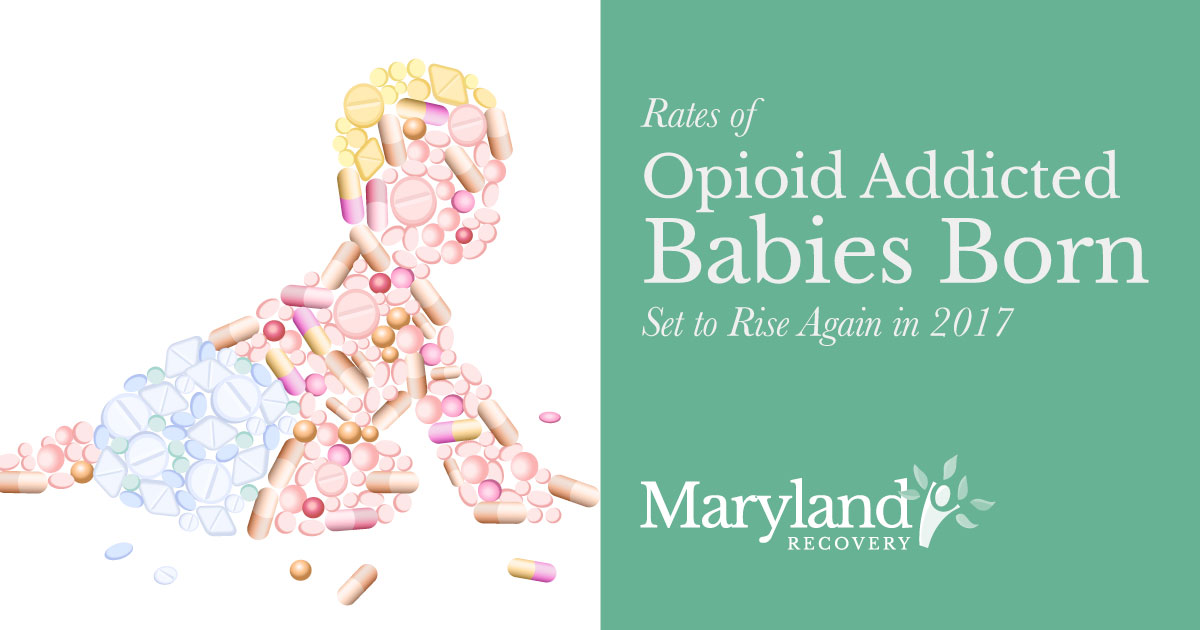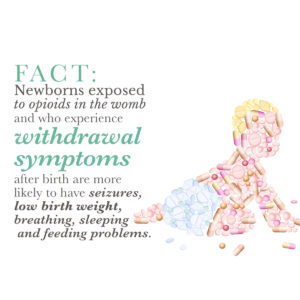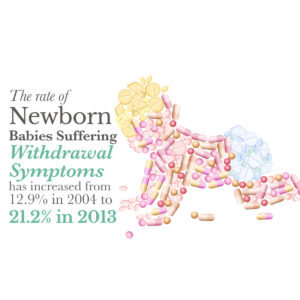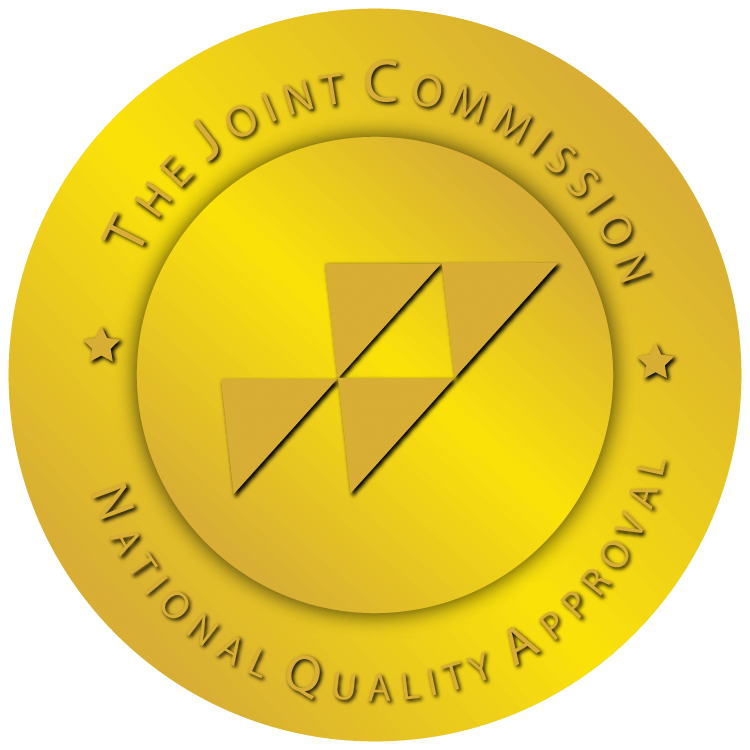 One of the most tragic aspects of opioid abuse is that it often leads to babies being born addicted to opioids. The link between pregnant mothers and their babies is profound, and if the mother struggles with opioid addiction during her pregnancy, her baby will as well. Babies born with opioid addiction face an extremely difficult transition into the world. The first few weeks of life are critical for babies’ health, and opioid addiction makes this even more challenging.
One of the most tragic aspects of opioid abuse is that it often leads to babies being born addicted to opioids. The link between pregnant mothers and their babies is profound, and if the mother struggles with opioid addiction during her pregnancy, her baby will as well. Babies born with opioid addiction face an extremely difficult transition into the world. The first few weeks of life are critical for babies’ health, and opioid addiction makes this even more challenging.
Babies are born addicted to opioids when mothers who already abuse opioids become pregnant or become addicted to opioids while pregnant. Unfortunately, statistics show that every 19 minutes a baby is born in the U.S. addicted to opioids. The country has faced a nationwide opioid addiction epidemic, and the trend does not appear to be subsiding as we enter 2017.
Consequently, the number of opioid-addicted babies born in the United States is expected to rise in 2017 as well. Drug overdose deaths are now the leading cause of accidental deaths in the United States, and states are reporting consistently higher numbers of substance abusers.
America’s Opioid Crisis
 Over the past decade, the number of opioid prescriptions sold in the United States has skyrocketed. Opioids are extremely effective painkillers and doctors prescribe them to patients suffering chronic pain, post-operative pain, and pain from traumatic injuries. Pharmaceutical companies have aggressively marketed these drugs for years and that marketing, coupled with other factors, has contributed to the opioid addiction crisis in the U.S. today.
Over the past decade, the number of opioid prescriptions sold in the United States has skyrocketed. Opioids are extremely effective painkillers and doctors prescribe them to patients suffering chronic pain, post-operative pain, and pain from traumatic injuries. Pharmaceutical companies have aggressively marketed these drugs for years and that marketing, coupled with other factors, has contributed to the opioid addiction crisis in the U.S. today.
While there is actively a problem with the abuse of prescription painkillers, there is a surprising number of current opioid addicts that state that they were not aware of how dangerous the drugs prescribed to them could be — hinting at a lack of patient warning and disclosure from doctors before prescribing opioids. Opioids are powerfully addictive and entail some of the worst withdrawal symptoms of any drug. Patients with legitimate medical reasons for taking these drugs, often become addicted because they take them longer than necessary or increase their doses without a doctor’s approval. Prescription opioids are responsible for most of the drug overdose deaths in the country, with heroin trailing closely behind.
Heroin often becomes a cost-effective alternative for individuals who become addicted to prescription opioids. Once prescriptions can no longer be filled, addicted opioid users can more easily access heroin, which gives the same effect as opioids and can stave off the withdrawals caused by lack of access to prescription painkillers. One of the most dangerous and addictive properties of opioids is that users gradually develop a tolerance and require increasingly larger doses to achieve the desired effect. This fuels the cycle of addiction, and heroin is much more dangerous than prescription opioids due to the fact that, because it is illegal, it is unregulated. Heroin users may subsequently use a much stronger dose than they expected, or use heroin that has been mixed with other, more dangerous substances. Heroin and other opioids are powerfully addictive and, without proper help, the cycle of addiction can become too overwhelming to break – even during pregnancy.
Addiction During Pregnancy
 Healthcare professionals across the country (and the world) strongly advise expectant mothers to avoid any amount of alcohol or drug use while pregnant. Even small amounts of substances like alcohol, cocaine, opioids, and heroin can cause significant harm to the fetus. There is no safe amount of drugs or alcohol for pregnant women. Alcohol or drug abuse during pregnancy can cause miscarriage, low birth weight, intellectual and physical disabilities, illness, deformities, or even fetal death. Alcohol abuse can cause a particularly worrisome condition known as Fetal Alcohol Syndrome, which often entails developmental delays, problems with internal organ function, intellectual disability, and physical malformations.
Healthcare professionals across the country (and the world) strongly advise expectant mothers to avoid any amount of alcohol or drug use while pregnant. Even small amounts of substances like alcohol, cocaine, opioids, and heroin can cause significant harm to the fetus. There is no safe amount of drugs or alcohol for pregnant women. Alcohol or drug abuse during pregnancy can cause miscarriage, low birth weight, intellectual and physical disabilities, illness, deformities, or even fetal death. Alcohol abuse can cause a particularly worrisome condition known as Fetal Alcohol Syndrome, which often entails developmental delays, problems with internal organ function, intellectual disability, and physical malformations.
Unfortunately, heroin and other opioids can cause serious pain and discomfort when discontinued, and the welfare of the fetus may not be enough motivation for pregnant addicts. When opioid withdrawal sets in, users experience intense cravings and often disregard their personal wellbeing to secure another dose.
Neonatal Abstinence Syndrome
When babies are born addicted to opioids, they develop a medical condition known as Neonatal Abstinence Syndrome (NAS). Put simply: This condition is opioid withdrawal. While the withdrawal symptoms from opioid abuse are profound in adults, they are extremely distressing and potentially fatal for infants born with NAS.
Symptoms Of NAS
Babies born with NAS face a very difficult road. When a pregnant mother uses opioids, the baby absorbs these substances in the womb. Once born, the baby can no longer receive doses this way and enters withdrawal. The common symptoms of NAS are:
- Convulsions
- Vomiting
- Fever
- Sweating
- Diarrhea
- Mottled Skin
- Tremors and Jitters
- High-Pitched Crying
- Difficulty Sleeping
- Loss of Appetite
- Dehydration
- Death
The severity and timing of these symptoms’ appearance depends on the baby’s other health factors. Symptoms vary depending on whether the baby was born prematurely or full-term, the type of substance used, the last time it was used, the severity of the mother’s addiction, and the size of the baby.
Typically, NAS requires pharmacological intervention. In milder cases, symptoms may only last for up to five days. If symptoms persist longer, doctors must administer morphine or methadone to curb the withdrawal symptoms. Unfortunately, pharmacological intervention is necessary for 50-70% of infants born with NAS.
Long-Term Complications
Identifying the exact long-term effects of NAS has been a challenge. This is due to the countless independent factors that could cause variations in these children’s experiences. Children who successfully overcome NAS still face developmental challenges such as poor social engagement and responsively, shorter attention spans, and more difficulty with early motor function development.
Professional Cuddling
Doctors have been searching for more effective ways to treat babies with NAS due to the pain and stress the condition causes. One of the most effective treatments has been simply cuddling these babies. Even when pharmacological intervention is necessary, human contact is absolutely crucial for healthy infant development and has proven to ease the stress caused by opioid withdrawal in infants.
These “professional cuddlers” offer a glimmer of hope and spirit in the tragedy of opioid addictions that affect the young and old across Maryland and the United States. With opioid abuse rates expected to rise again in 2017, we as a society need to understand the collateral damage that drug addiction does to not only the addicts themselves, but to family, friends, and even to lives just entering this world.
The Opioid Addiction Epidemic Affects Those From All Walks of Life, and Even Expectant Mothers Can Struggle to Quit, Even When Caring For A New Life
LET US HELP YOU BREAK YOUR OPIOID ADDICTION:
Maryland Recovery Is Here To Help
Reviewed by Christopher Schwartfigure MS, LGPC, CAC-AD








